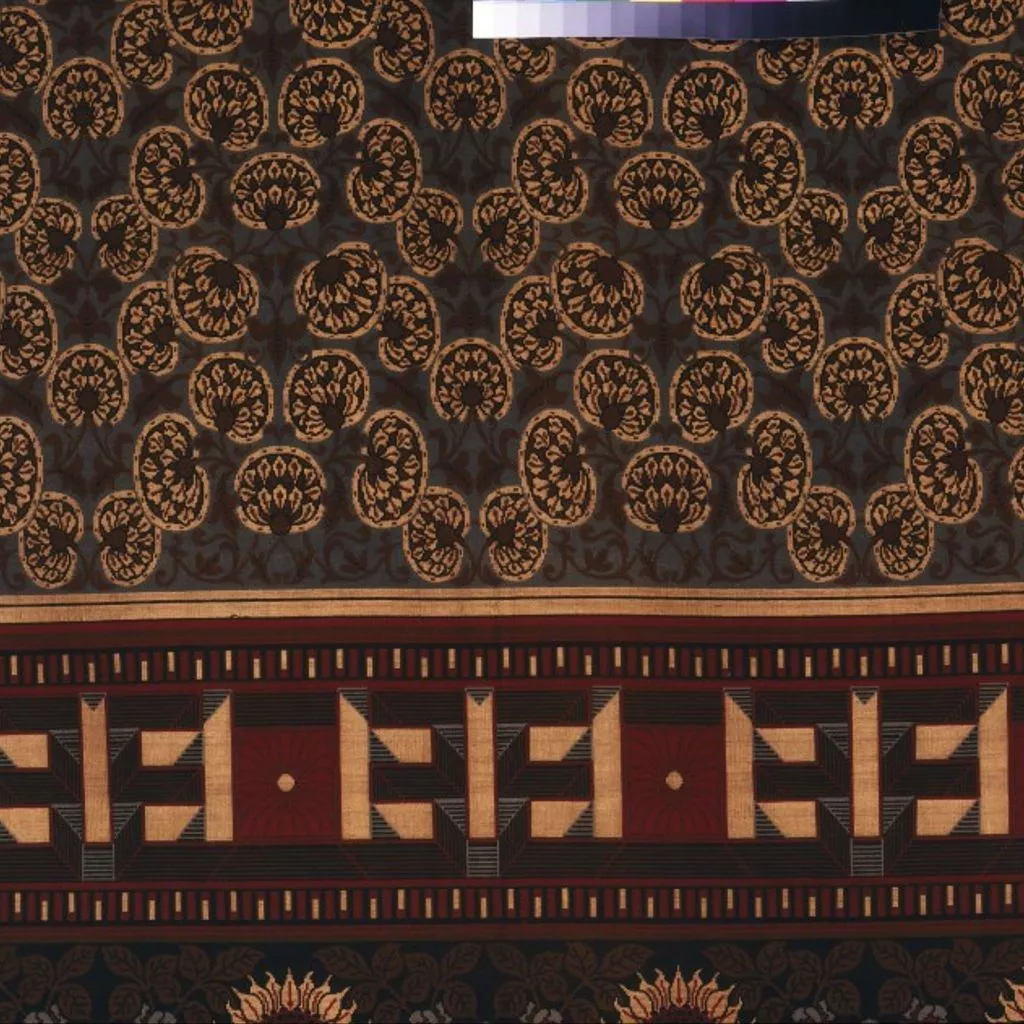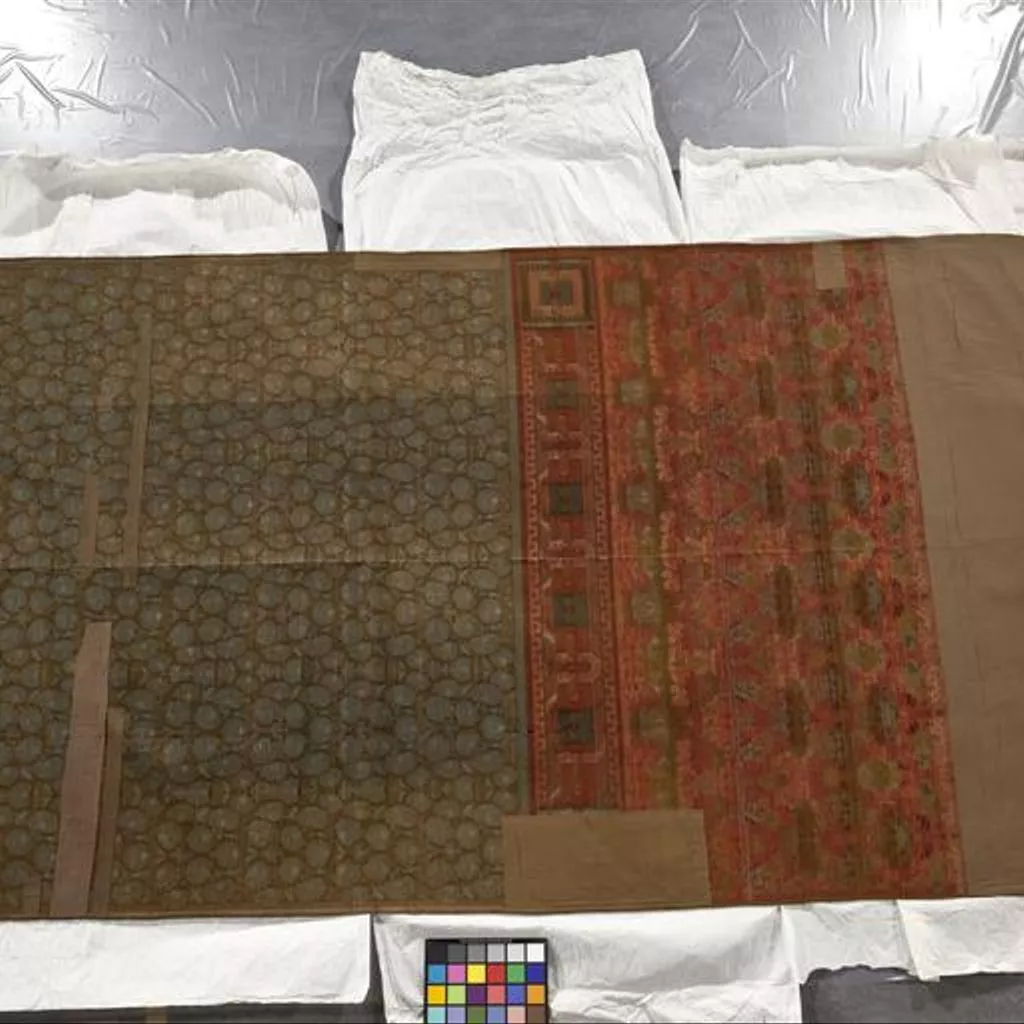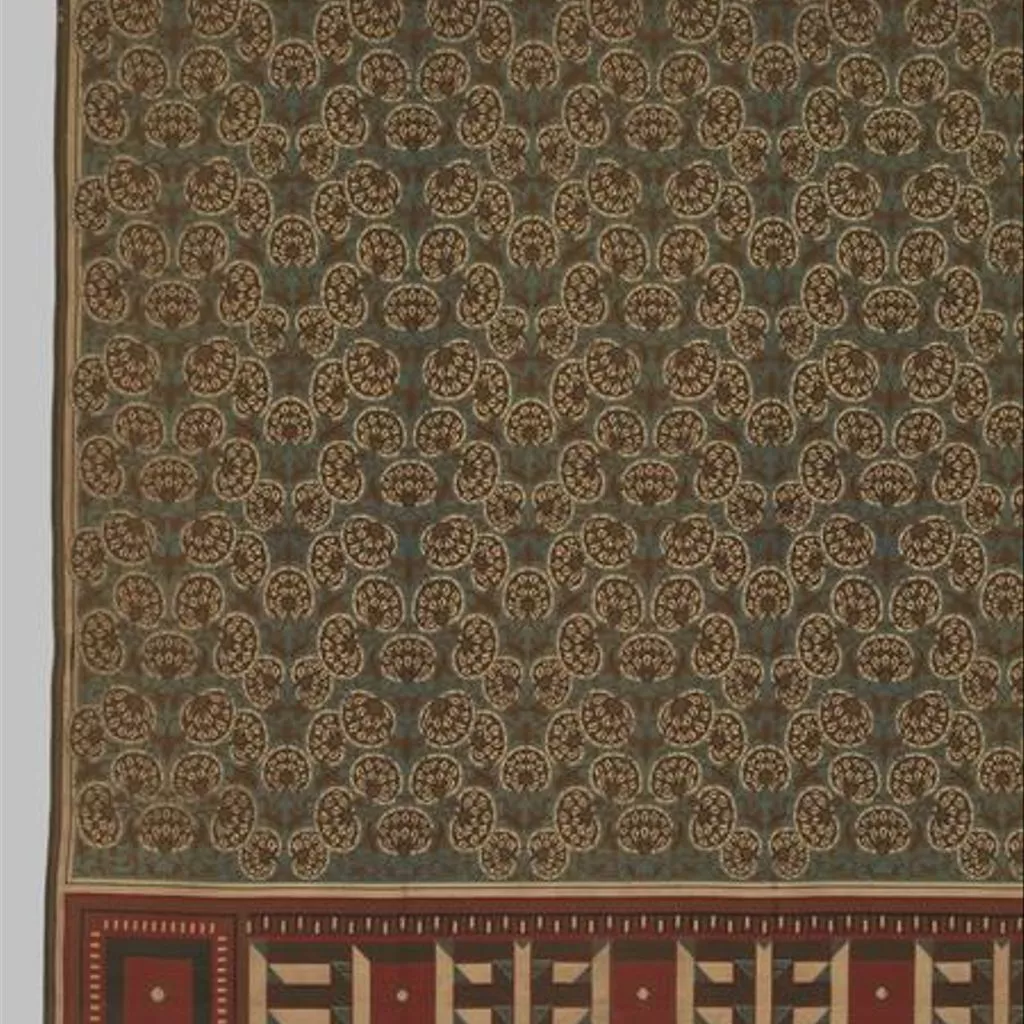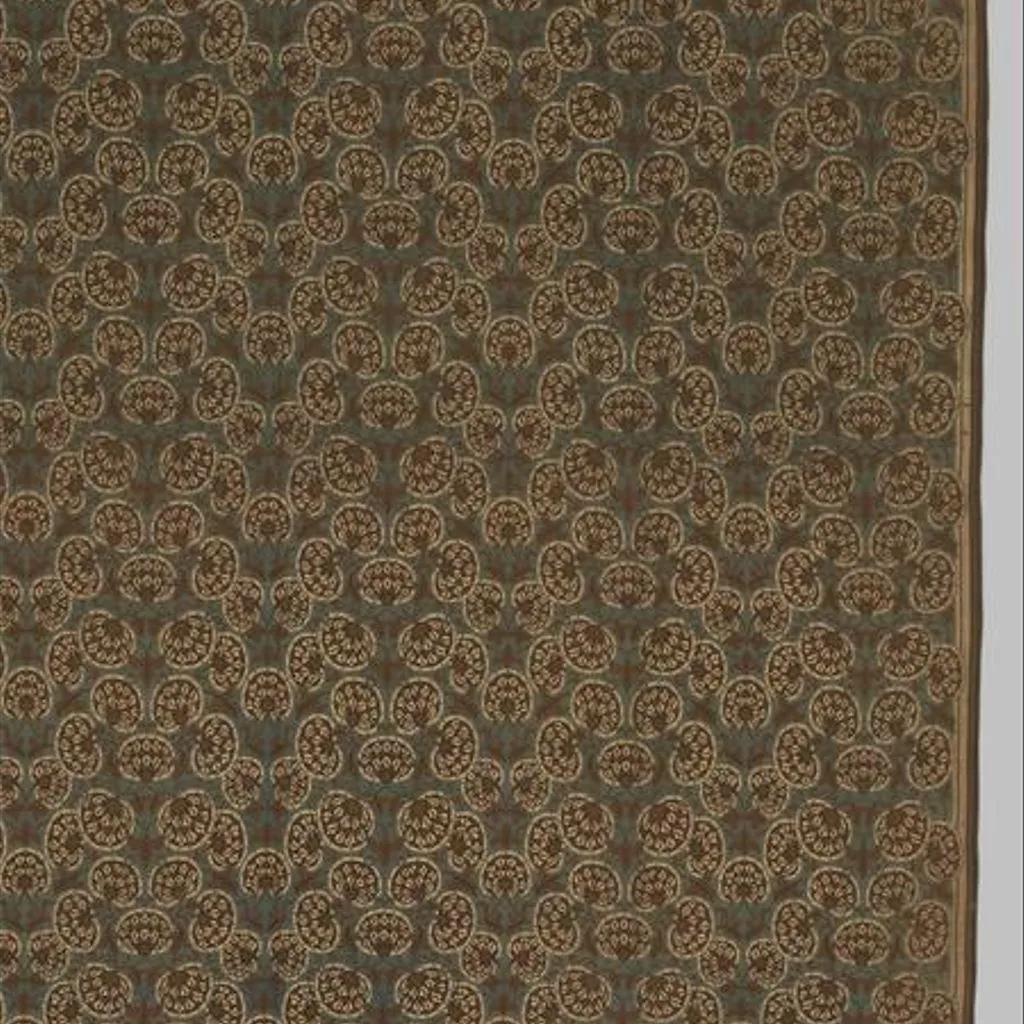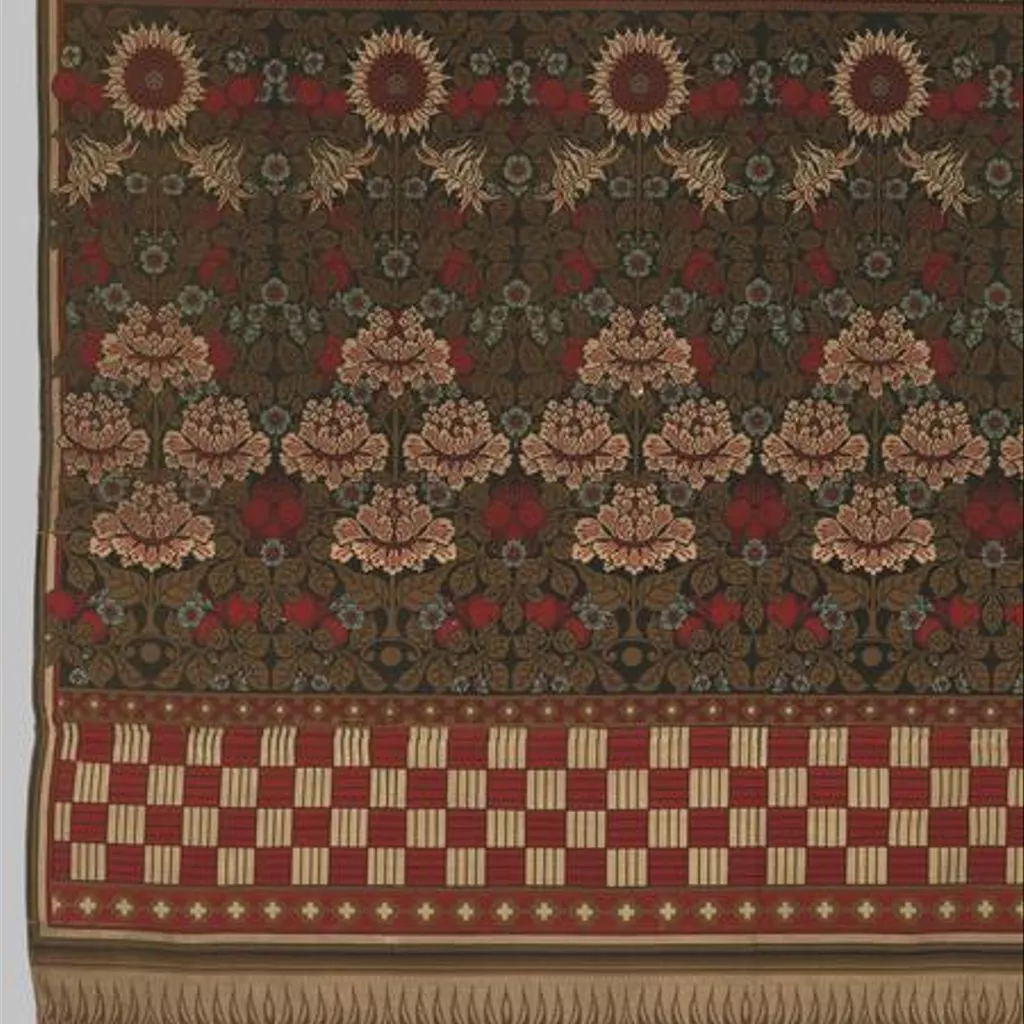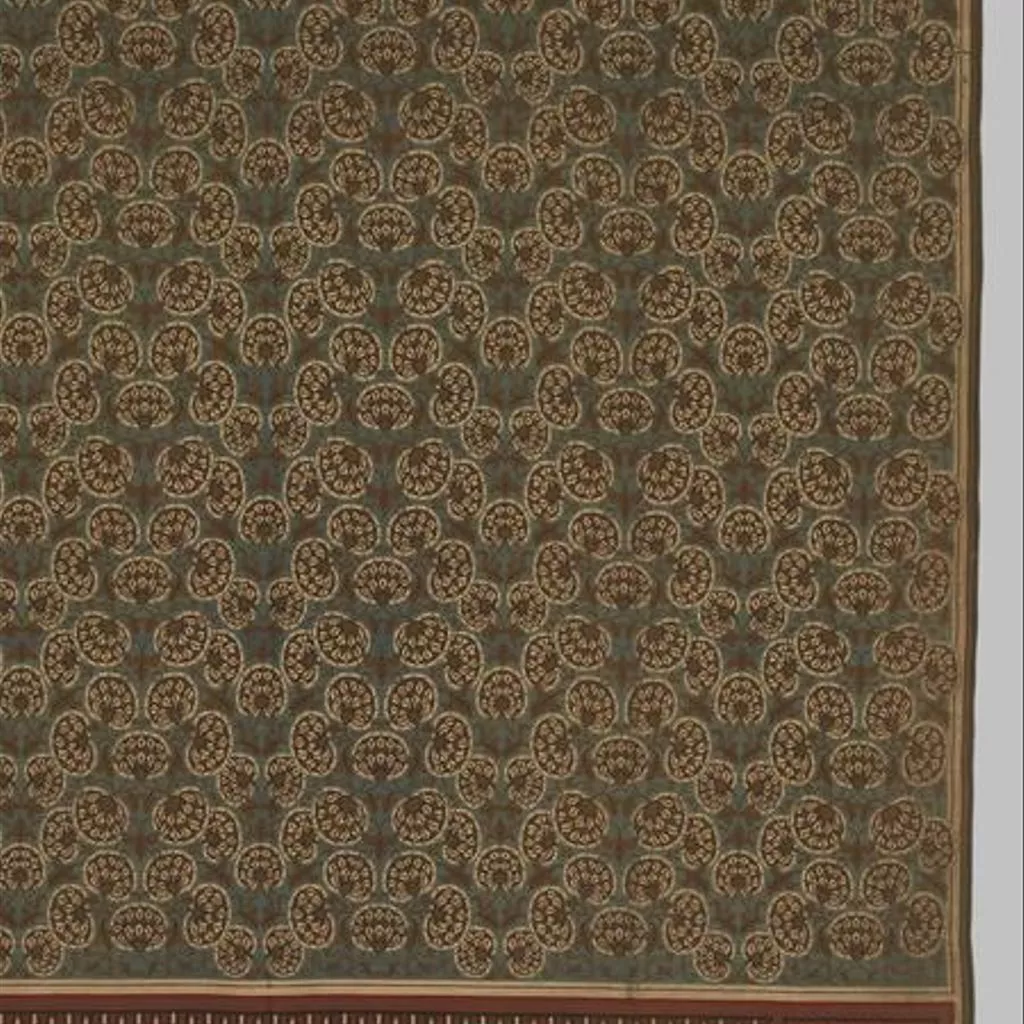Description
British Galleries:
This hanging reflects the fashion for dividing walls into separate horizontal bands, popular from the 1870s. This type of woven furnishing fabric became so sought after that the maker, Templeton's, devoted part of their factory to its manufacture and it was sold both as hangings and door curtains (portières). [27/03/2003]
Curtains made of oven jacquard, silk and wool. They have 'dados' and 'fillings' with various borders but lack friezes. The filling has an all-over repeating pattern of stylised flower heads borne on leafy stems. the ground is blue-green, stems and leaves mid-brown with flower heads in gold detailed in mid-brown and black. The border separating the filling from the dado has a geometric fret and stop design with three-dimensional effects achieved by bands of parallel stripes. Carried out in red, black, mid-brown, gold and pale blue.
The dado has a pattern of 6 vertical leafing stems bearing sunflowers at the top, berries and blossom along their lengths and a lower arrangement of 4 flower heads. The ground is black, sunflowers in gold, red, black and pale blue; stems and leaves in mid-brown, berries are red, blossoms in pale blue and red and the lower flower heads are gold and red.
The widest band of the lower horizontal border has a chequer board pattern in gold and red with black stripes. The patterning terminates in a scroll band in gold on mid-brown.
Hanging of woven silk and wool, probably designed by B J Talbert, Glasgow, 1878-1880
These curtains would have been hung on a wall or as a portière across the back of a door. The design shows a series of horizontal bands of patterns. These follow the division of walls used in fashionable British interiors during the third quarter of the 19th century. The design is attributed to Bruce J. Talbert (1838-1881) because of the competence of the general composition and on the evidence of one design in the V&A collections (museum no. 9077.5). It shows an almost identical pattern to the repeating magnolia flower heads seen in the lower filling.
This drawing is part of a group of Talbert drawings acquired by the Museum in 1883. One other design in the set is marked with the name of Cowlishaw Nicol & Co, a Manchester weaving company, suggesting that Talbert designed these patterns specifically for woven textile furnishings.
Although not marked, the structure of these curtains is identical to existing examples with the trademark of J and J.S. Templeton. This was a branch of James Templeton, established in Glasgow in 1839 for the manufacture of carpets. From the 1860s one section of the factory produced woven curtains until it was destroyed by fire in 1886.















